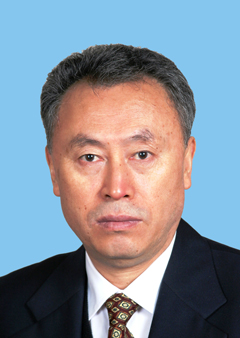
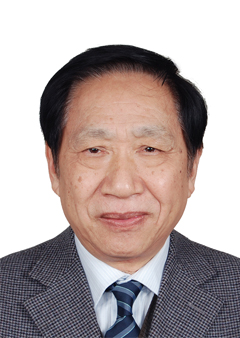
Mr. Ye participated in the design of the first production reactor of China in the 1960s and design of dual-purpose (production plus electricity generation) reactors as the chief engineer in the 1970s. As the chief engineer, he had devoted himself to construction of another new 600 MW NPP in the site of Qinshan Nuclear Power Plant since 1986 and witnessed its successful commercial operation in 2002.
Mr. Ye was elected as an academician of the Chinese Academy of Engineering in 2003.
Abstract for keynote : It is now widely recognized that inevitable increase in energy demand and climate change have become and will remain the most important twin problems facing humankind over the medium to long term. As a sustainable, reliable, low-carbon, and efficient energy source, nuclear power contributes over 11% of the global electricity while emits extremely low levels of greenhouse gases (GHG). It is becoming an international consensus that nuclear energy will continue to play a major role in lowering emissions from the power sector, while improving security of energy supply and providing large-scale electricity at stable production costs.
With support of Sino-France Cooperation Program on Nuclear Energy in
2017(Program Phase-I), experts from the Chinese Academy of Engineering, the
National Academy of Technologies of France and the French Academy of Sciences
jointly drafted a splendid report titled Joint Proposals On Future Of Nuclear Energy which
received warm response after its release in the 2017 IAEA General Assembly in
Vienna. In 2018, our three academies continued our cooperation to implement
Program Phase-II and chose “nuclear
energy and the environment” as the topic of our joint research. The present
report to be released in this Summit is the result of our collaborative
research on the topic.
The report more specifically deals with the impact of nuclear energy
on the environment considering all operations from uranium mining to
radioactive waste disposal. It addresses in particular the four major
environmental issues associated with nuclear power generation:
l Evaluation and control of the radioactivity released by nuclear installations under normal operation,
l Management of spent fuels and radioactive wastes, notably those that will be disposed of in geological repository,
l Management of severe accidents and their radioactive releases,
l Improvement
of nuclear safety as a way to limit environmental impacts and to contribute to
public acceptance of nuclear energy.
In summary, this report is aimed at providing a balanced assessment of
the impact of nuclear energy on the environment. On the one hand, nuclear
energy has positive effects in providing energy with a very limited level of
greenhouse gas emissions without emissions of air pollutants or solid nano- or
micro- particles as it is the case for energy systems using fossil fuels. This
is an essential asset in the current situation where climate change induced by
human activities has become one of the most difficult challenges facing
humankind and where air pollution has become a major problem in many countries.
On the other hand, nuclear power raises local and more global environmental
issues that pertain to radioactive waste management and to the multiple
consequences of severe accidents. Considerable effort has been expanded to
define a sustainable management of high-level radioactive waste leading to
their final disposal in geological formations. Lessons learnt from the three
main severe accidents in the past of nuclear power production have served to
improve nuclear reactor design, reduce the probability of occurrence of the
release of radioactivity and make sure that the consequences to the environment
remain limited if one such accident occurs.
So the nuclear energy is a Sustainable, Reliable, Low-carbon, and
Efficient Energy Source to all human beings and its ecology and the environment.
Abstract for plenary session: As
of April 2019, China has been operating 45 nuclear power units with total installed
capacity of 45.89 million kilowatts. Among the operating units, there are the world's
first four AP1000 units, two in Sanmen, Zhejiang Province and the other two in Haiyang,
Shandong Province, and the first EPR unit in Taishan, Guangdong Province. There
are 12 units under construction in China with total installed capacity of 12.78
million kilowatts, including four Hualong-1 units, a 200MWe demonstrative high
temperature gas-cooled reactor in Rongcheng and China Demonstration Fast
Reactor in Xiapu. This year China plans to start construction of another four
Hualong-1 units, two in Zhangzhou, Fujian Province, and the rest two in
Huizhou, Guangdong Province. At the same time, two CAP1400 units are planned to
be built in Rongcheng, Shandong Province.
Nuclear
energy is a realistic option which is capable of supplying large-scale
base-load electricity in a safe, efficient and sustainable way while simultaneously
plays a pivotal role in tackling environmental and climate problems. As a
dispatchable power source, nuclear energy also serves as an important complement
to renewable energy sources (like wind or solar photovoltaic), which are indispachable
with intermittent production of less resilient responses to demand.
Nuclear
energy enjoys huge potential of improvements such as technology evolution
towards Gen-IV reactors. Technological progress, for example accident tolerant
fuels (ATF), would enhance safety and simplify the nuclear power system, thus
improving competitiveness of all Light Water Reactors. Highly innovative SMRs
could offer new solutions for flexible and decentralized power production.

Mr.ZHAN Wenlong,a nuclear physicist and CAS academician, was born in Xiamen, Fujian Province in Oct. 1955
In early 1982, he graduated and got
B.S. from Modern Physics Department of Lanzhou University. Then, he started his
research career at Institute of Modern Physics, CAS. During this time, he was a
visiting scholar at GANIL in France from 1986 to 1988 and visiting scientist at
Columbia University (also at BNL and LBNL) in US from 1991 to 1993. He served
as a vice director and director of Institute of Modern Physics, CAS, and vice
director of National Laboratory of Heavy Ion Research Facility in Lanzhou. In
January 2008 to 2016, he was appointed a vice president of CAS.
His main research fields include the heavy ion physics and mega-science project
of accelerator in the energy range from low to relativity energy. He joined the
researches of incompletely deep inelastic scattering, new isotopes synthesis,
new isotopes mass measurement, the TOF prototype of RHIC-PHENIX, radioactive
ion beam separator (RIBLL) and so on. Recently, He is in charge of the national
key mega-science project "Cooling Storage Ring base on Heavy Ion Research
Facility in Lanzhou" (HIRFL-CSR) inlude the aplcaton of heavy ion thrapy,
and also is the coordinator of nuclear science and application projects in CAS, ex. HIAF&CiADS.

Abstract:Chinese magnetic confinement fusion (MCF) development has made significant progresses for the past decade. With successful construction and operation of EAST superconducting tokamak, as one of valuable partner of ITER, China is playing a key role towards next step ITER. The Chinese Fusion Engineering Testing Reactor (CFETR) is the next device for the Chinese MCF program which aims to bridge the gaps between the fusion experiment ITER and the demonstration reactor DEMO. CFETR will be operated in two phases: Steady-state operation and tritium self-sustainment will be the two key issues for the first phase with a modest fusion power up to 200 MW. The second phase aims for DEMO validation with a fusion power over 1 GW. Roadmap of Chinese MCF, present of state of Cn-MCF, gaps for construction and operation of CFETR, efforts to fill these gaps and speedup the fusion energy application in China is presented in this paper.
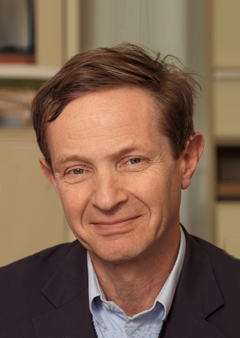
Abstract:The report underlying this presentation is jointly released by the Chinese Academy of Engineering, the National Academy of Technologies of France and the French Academy of sciences. Responding to societal concerns about the environmental consequences of human and industrial activities, it focuses primarily on the environmental impacts of nuclear energy in normal and accidental situations, including waste management and aims at providing a comprehensive analysis of these issues. Two major questions are considered in this presentation: (1) Evaluation and control of the radioactivity released by nuclear installations under normal operation, (2) Management of long-term radioactive spent fuel and radioactive waste, notably those that will be disposed of in geological repositories. The report emphasizes that in the context of climate change, nuclear energy, with its very low emission of GHG, has a unique capacity to generate massive and on-demand dispatchable amounts of electricity. In contrast to fossil fuel fired plants that emit, important quantities of air pollutants such as particles, NOx, SOx, and heavy metals, nuclear power plants do not. This is an essential asset at a point in time where air quality has become a major problem in many countries and where nuclear energy could replace fossil fuel powerplants and contribute to improve the situation. Furthermore, it is indicated that under normal operation, radioactive releases by NPPs are of the order of a few per cent of the authorized levels, which are well below the levels of natural radiation. This is why the report concludes that the impact of nuclear power plants under normal operation is negligible or quite limited in terms of radioactivity. Under normal operation, the major environmental impact from nuclear energy is due to the front-end activities, related to uranium mining. This might be reduced in the future with a more efficient burn-up of uranium fuel in GEN-III and GEN-III+ installations and more substantially diminished with GEN-IV reactors. Another matter of concern is that of water withdrawal and consumption. This needs to be considered when siting inland nuclear plants in view of water availability. Turning to the issue of nuclear waste management, it is concluded that present waste management policies are based on the latest technologies for waste confinement, including disposal of high-level long-lived radioactive waste in deep underground repositories. It is noted that considerable effort has been expanded to define sustainable management of high-level radioactive waste with final disposal in geological formations. In this respect, simulations indicate that the potential migration of radionuclides through the confinement barriers and hundreds of meters of overlying bedrock over geological times (hundreds of thousands of years) is limited to the extent that the additional radioactivity from this phenomenon will be less than a percent of natural background radiation.

Mr. Dominique Vignon,Civil engineer by education, Dominique Vignon also
graduated in Law and in Economics.
He worked for EDF, the French electricity utility for
ten years, in charge of design and construction of nuclear power plants, in
France and abroad.
In 1991, he joined the Framatome group (the French
nuclear vendor), to lead the basic design of the EPR project. He became
President and CEO of Framatome until 2001. Under his leadership, Framatome
successfully delivered the Nuclear island of the Daya Bay and Ling Ao projects.
He is a former member of the INSAG Group, directly
advising the IAEA General Director on safety issues. He is an active member of
the National Academy of Technologies of France, and
of the World Nuclear Academy.
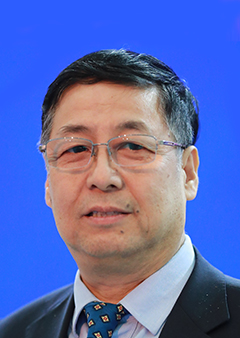
In 1997, Mr. Lei became Deputy Chief Engineer of the Company and was appointed as Vice President in 2001.
In 2002, he joined Institute of Physical-Chemical Engineering as its President.Since 2010, he has been Chief Engineer of CNNC and Vice President of CNS.
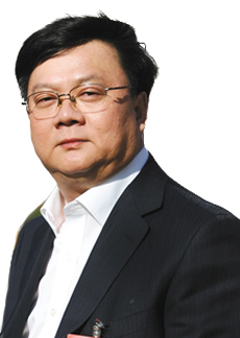
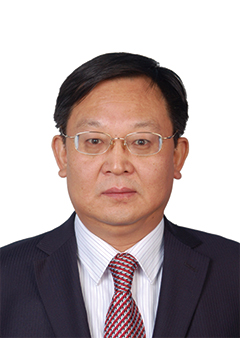
Liu is a scholar of impressive academic attainments in areas including evaluation methodology & mode of public exposure, monitoring techniques for nuclear & radiation emergency, minimization of radioactive waste, monitoring and evaluation of natural radiation and radiation protection from transuranium nuclides. He has made significant contributions to nuclear & radiation emergency and environment protection during construction and operation of China Advanced Research Reactor (CARR) and China Experimental Fast Reactor (CEFR). As a celebrated expert on radiation safety in China, Mr. Liu is now engaging in application of artificial intelligence to radiation protection.
Liu has been awarded 5 prizes for progress in defense science and technology, and 4 prizes of science and technology from CNNC. He has published 15 monographs and more than 80 papers of which 30 have been indexed by SCI and EI.
With the
support of the Sino-France cooperation program on nuclear energy, the Chinese Academy
of Engineering, the National Academy of Technologies of France and the French Academy
of Sciences formed a joint team of experts in 2018 to continue the research on
nuclear energy and environmental issues. A Life Cycle Analysis (LCA) is used to
assess the environmental impacts, both radioactive and non-radioactive, of
nuclear power generation to the nuclear fuel cycle from the uranium mining and
milling, nuclear power operation, spent fuel and radioactive waste management.
The
basic results show that: first, from the perspective of LCA method, nuclear
power generation has the advantage of nearly zero CO2 emissions,
which is much lower than that of coal-fired power generation, while Nuclear Power
Plants (NPPs) do not emit CO2 and other Greenhouse Gases (GHS)during
their operations. Second, from the perspective of the whole energy chain of
nuclear power generation, the environmental radiation impact mainly comes from
the front-end of nuclear fuel cycle, namely uranium mining and milling, while
the environmental radiation impact during the normal operation of NPPs is about
1% of the exposure to natural background radiation, and is far lower than the limit,
set by national authority or recommended by international organizations, of 1 mSv
per year for public exposure. Third, from the point of radwaste management, the
final disposal of the low and medium level of radioactive waste from NPPs has
been mature, reliable engineering technology and its practice, and for the
long-term storage of spent nuclear fuel and the final disposal of high-level
radioactive waste, now it has available engineering solutions, and it is also in
constant research and development of new waste treatment and disposal
engineering technology, such as Accelerator Driven System (ADS) transmutation technology
can significantly reduce the amounts of long life radioactive waste. Fourth, about
the environmental impacts of nuclear power plant accident, since the Fukushima Daichi
nuclear power plant accident, the safety design of nuclear power technology has
significantly increased, such as the Hualong One NPPs and high-temperature
gas-cooled reactor, which can physically eliminate the possibility of large
amounts of environmental releases, the size and its scope of the environmental
impact of NPPs accident can be properly controlled.
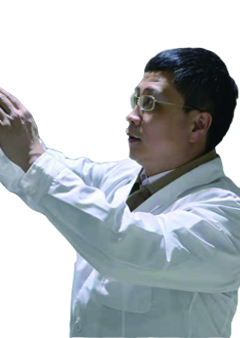
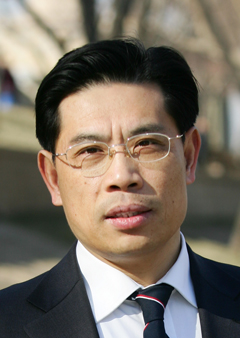
Abstract:With the rapid development of nuclear power in China, the disposal of high-level radioactive waste (HLW) has become an important issue for nuclear safety and environmental protection. Deep geological disposal is internationally accepted as a feasible and safe way to dispose of HLW, and underground research laboratories (URLs) play an important and multi-faceted role in the development of HLW repositories. This paper introduces the overall planning and the latest progress for China’s URL. On the basis of the proposed strategy to build an area-specific URL in combination with a comprehensive evaluation of the site selection results obtained during the last 33 years, the Xinchang site in the Beishan area, located in Gansu Province of northwestern China, has been selected as the final site for China’s first URL built in granite. In the process of characterizing the Xinchang URL site, a series of investigations, including borehole drilling, geological mapping, geophysical surveying, hydraulic testing and in situ stress measurements, has been conducted. The investigation results indicate that the geological, hydrogeological, engineering geological and geochemical conditions of the Xinchang site are very suitable for URL construction. Meanwhile, to validate and develop construction technologies for the Beishan URL, the Beishan exploration tunnel (BET), which is a 50-m-deep facility in the Jiujing sub-area, has been constructed and several in situ tests, such as drill-and-blast tests, characterization of the excavation damaged zone (EDZ), and long-term deformation monitoring of surrounding rocks, have been performed in the BET. The methodologies and technologies established in the BET will serve for URL construction. According to the achievements of the characterization of the URL site, a preliminary design of the URL with a maximum depth of 560 m is proposed and necessary in situ tests in the URL are planned.
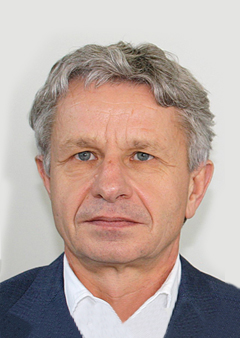
Dr. Grzegorz (Greg) Rzentkowski, Director, Nuclear Installation Safety Department of Nuclear Safety and
Security International Atomic Energy Agency.
Greg Rzentkowski
joined the IAEA as Director of Nuclear Installation Safety in 2015.
Greg has over 35
years of experience in mechanical and nuclear engineering. He
began his nuclear career in
1989 in Ontario Hydro,
Canada, as a Senior Research Engineer. Since joining the Canadian Nuclear Safety
Commission in
1995, he has held progressively responsible
positions in management of technical and regulatory
programs. In 2008, he was named Director General of the Directorate of
Power Reactor Regulation. He
also
chaired the Fukushima Task Force which developed Canada’s action plan for
implementation of safety improvements.
Greg holds a
Doctor of Philosophy in Mechanical Engineering and has served as Adjunct Professor at McMaster
University in
Hamilton, Canada. He published
several research papers in scientific journals and conference proceedings,
and
proprietary reports prepared for the Nuclear Industry.
Abstract: The Fukushima-Daiichi accident demonstrated that even the best designed, constructed and operated
engineering
system, such as a power reactor, may eventually fail. In the aftermath of the accident, concerted
international efforts to
improve safety of Nuclear Power Plants (NPPs) resulted in distinct shift from accident
prevention to
accident mitigation. As a result, NPPs are now undoubtedly safer then
there were before the accident.
Most nuclear power plants have additional design features and mobile equipment, supported by extensive sets of
Emergency
Operating Procedures and Severe Accident Management Guidelines, to practically eliminate consequences
of
accidents, should an accident occur.
The concept of practical elimination is to be considered for both new and existing NPPs as part of an enhancement of
reactor defense in depth. The new plants shall be designed so that they can be brought into a controlled state and thecontainment functions can be maintained so that the possibility of certain accident conditions arising, which could lead
to an early radioactive release or a large release to require long-term protective measures and actions, is practically
eliminated. For the existing plants, comprehensive and systematic safety assessments shall be carried out periodically
and regularly throughout their lifetime to identify safety improvements that are oriented to meet the objective of practical
elimination. Reasonably practicable or achievable safety improvements shall be be implemented in a timely manner,
considering the relevant IAEA Safety Standards.
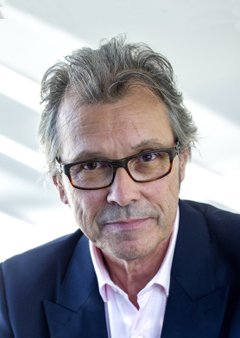
Mr. Patrick Landais (63 y.o), holds a doctorate in geochemistry (1981). After working for Elf and Cogema, he joined the CNRS in 1987 and became Research Director in 1991. In 2001, he was appointed as scientific Director of ANDRA, the French national agency for radioactive waste management. For his studies on the geological disposal, he received a Grand Prix of the French Academy of Sciences. In 2005, he became member of the management board of the CNRS. He went back to ANDRA in 2006 before becoming Scientific Director of the French geological survey in 2013. In 2016, he returned to ANDRA as Chief Technology Officer. Since February 2019 he is High Commissioner for atomic energy. Abstract:France produces about 75% of its electricity from nuclear power. The generated radioactive waste must be secured to protect man and his environment. Andra is in charge of proposing and implementing solutions commensurate with the risk represented by each type of waste. Facilities have already been operated for nearly fifty years for low and intermediate-level short-lived waste and more than a decade for waste coming from dismantling. Finally, the high-level vitrified waste and the intermediate-level long-lived residues will be disposed of in a geological formation, a clay formation in eastern France. For the latter, the Cigéo project is being prepared. Its implementation has been the subject of decisions by the government since 2006, after a first Public Debate on the management policy and strategy. A second Public Debate was organized in 2013 in order to present the Cigéo project. Subsequently a new law was passed in 2016. Building and operation of Cigéo must be able to rely on the feedback generated at each step, and to benefit from any new development. This progressive approach introduces the concept of reversibility, leaving flexibility for all generations to follow or to reconsider the options we have taken. On this basis, Andra will submit the Cigéo licensing application in 2020.
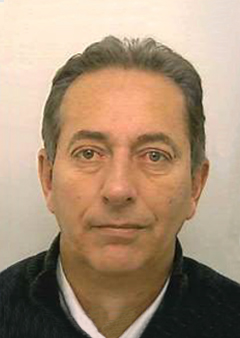
Mr. Alain FRICHET, is the Framatome Fuel Products and Technologies Vice –President . In addition he is the Quality Director of the Fuel Business Unit.
He is leading the Research and Development of all Framatome Fuel PWR and BWRs Technologies and the definition of the Products and Codes and Methods strategies. This encompasses all projects, realized on Framatome sites in France, Germany and US, together with worldwide technical partnerships.
He was graduated from PARIS Pierre et Marie Curie University as Doctor in Metallurgy in 1991 following his Engineering school top class diploma in 1988. Specialist in the material domain, he joined Framatome in 1995 as M5Framatome alloy project manager and then occupied various management and executive positions in Framatome including Worldwide Fuel engineering.
Abstract:Following the Fukushima accident,
many initiatives were launched in the global nuclear industry including in the
fuel design R&D domain in order to provide enhanced resistance to extreme
situations. While targeting reinforcement of resistance in the unlikely event
of a Beyond Design Basis Accident (e.g. loss of cooling with loss of off-site
power), those programs are also looking for improved fuel cycle economics. The
presentation will address the question of what could be an ideal fuel from a
safety and economic viewpoints and will show a synthesis of the main options
studied by the industry and research organisms. The various main concepts will
be compared from safety benefit, economy, uncertainty in development &
licensing and time to market perspectives
The Framatome Fuel Business unit has
been very active for decades in this area with its French partners CEA and EDF and
additionally developed new programs and partnerships around the world including
European and US utilities to make its solution an industrial high-quality
reality. These efforts have led to two main concepts brought together as part
of Framatome PROtect program: the evolutionary Cr-Cr solution and the breakthrough
SiC-SiCf solution, both being optionally complemented by high burnup and high
enrichment levers making them even more attractive. The presentation will illustrate
the scientific background for these solutions, their advantages towards safety
and economy, some elements of their industrialization and their implementation
roadmaps.
These innovation needs and the related
engagement of fuel vendors, research organisms, utilities and states are not
only close now to provide safety and economically usable benefits but are also
a strong contribution to competence build up and renewal in the competencies of
product design and modelling. Such move of the Nuclear industry is also highly
positive since it delivers ? innovative by-products ? which can be
used to solve known challenges in normal operation and make the Fuel
reliability even better.
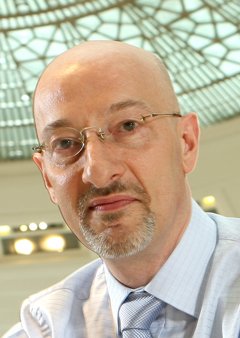
Mr. Arnaud Gay, Executive Vice President Technical Department &International Operations – Recycling Business Unit Arnaud joined the AREVA group in the early 1990's, working as a nuclear engineering project control manager for the construction of the La Hague facilities.In 1994, as an R&D and Advanced Studies manager, he helped developing the potential of the La Hague and MELOX plants. He was also involved in driving the international business development, with a focus on Asia and the US. In year 2000, Arnaud took the responsibility of spent fuel treatment contract negotiations with EDF (Electricité de France, the French utility). From 2002 to 2005, he was also in charge of corporate business development. In 2006, he was appointed Vice President for Innovation, Research and Projects and Director of D&D (Decontamination and Decommissioning) projects within the Treatment Business Unit. In this capacity he was responsible for oversight of the overall operations of AREVA on the Marcoule Site under decommissioning. In year 2008 Arnaud was appointed as Executive Vice President of the newly created AREVA’s D&D Business Unit with the management responsibility for all D&D projects (internal projects where AREVA is the owner-operator as well as external projects with customers. Following the FUKUSHIMA tsunami, Arnaud took over the lead of AREVA’s worldwide task force that was setup in an emergency for the responding to TEPCO requests. This includes on site operations from March to September 2011. The 1st January 2014, Arnaud was appointed as Executive Vice President International Operations, with oversight of all the international projects for the Back End Business Group. In this capacity he represents AREVA as, Lead Director at the Board of NMP, the JV in charge of the management of the Sellafield Site in the UK. In July 2016, in addition to his present position, he was appointed Head of the Technical Department of the Recycling Business Unit.
Abstract:The vitrification of high-level liquid waste produced from nuclear fuel reprocessing has been carried out industrially for over 40 years by orano, with three main objectives : durable containment of the long lived fission products, minimization of the final volume of waste and operability in an industrial context.
The vitrification process developed by CEA and successfully operated by orano is a two step vitrification process where High Level Liquid Wastes (HLLW) are first calcined before to be vitrified with glass frit into an induction-heated metallic melter.
These process and technological choices led to simple and compact equipment easy to operate, to maintain, to adapt and to replace in minimum time with minimum secondary waste.
Since the beginning of french vitrification history in the 50’s, continuous effort have been made to improve process (in line vitrification of fission products and noble metals, increase feeding calciner from 60l/ to 90l/h), technologies (melter reliability, evolution from hot induction melter to cold induction melter), and to adapt containment waste form matrix formulation for effluents to be vitrified (different fissions product, effluent coming from rinsing and decommissioning operation).
As a result Orano group, supported by CEA, has developped integrated a unique experience in the field of the design and operations of facilities with high record of safety, reliability and product quality in line with reprocessing plant Operations objectives
A new generation of process and melter is now under development for in situ D&D waste vitrification.

Dr. Andrei Moiseev, male, holds PhD degree in Physics and Mathematics from the Institute of Physics and Power Engineering (IPPE, Obninsk, Russia) in 2010 on the calculation analysis of experiments on fast power reactors. Since 2011 involved in the development of innovative fast reactor BREST-OD-300 with lead coolant. Presently he works as scientific supervisor of BREST-OD-300 project. Professional activity is related to the issues of neutron physics of fast-neutron reactor cores, calculation support of experiments, validation of calculation codes, improvement of safety of fast reactors, solution of problems of a closed nuclear fuel cycle.

Professor, Nuclear Professional School, The University of Tokyo
Director General, CLADS, Japan Atomic Energy Agency
He
graduate the University of Tokyo and got Ph.D on 1992.
Abstract:After Fukushima-Daiichi NPP Accidents, the nuclear power plant should be safety first. No more severe accidents should happen around the world. Nuclear energy is and will be a superior energy resource for sustainable future. To satisfy these requirements, Safety First Nuclear System with advanced technology are strongly expected. Japan Atomic Energy Agency (JAEA) is working to develop the Safety First Nuclear Systems. High-Temperature Gas-cooled Reactor (HTGR) is one of the candidates of Safety First Nuclear Systems. The basic three safety requirements, i.e., Stop chain reaction, Cool residual heat, Confine radioactive materials, are physically provided. Negative reactivity core characteristics automatically stops chain reaction during the accidents. Radiation heat transfer automatically cools the core. TRISO particle confines fission products. HTGR produces high-temperature, therefore, not only the electricity, these heats can be used as industrial heat source, desalination, hydrogen production and so on.
The concept of Safety-First Nuclear Systems would be a promising concept after Fukushima. JAEA will continue to develop the Safety-first Nuclear Systems. Also, for the sustainable future, Safety Decommissioning of Fukushima is JAEA's responsibility too. JAEA is contributing to the researches on Fukushima-Daiichi Decommissioning. Collaborative Laboratories for Advanced Decommissioning Sciences (CLADS) is the international central research center for decommissioning in JAEA. Our research topics include remote control system development, debris characterization, accident event progression evaluation and so on.
The current research and development
activities in Japan for safety nuclear system and decommissioning science will
be discussed.
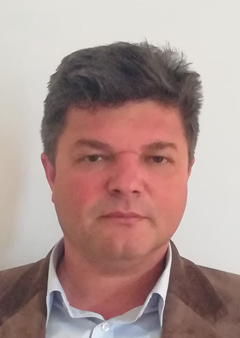
Mr. Dmytro Kharchenko, Male, Professor, Dr. Sci. in Theoretical Physics, and Ph.D. Supervisor, Institute of Applied Physics, National Academy of Sciences of Ukraine. He currently is the Head of the department of Modelling of Radiation Effects and Microstructure Transformations in Construction Materials. His main scientific interests are Statistical Physics, Non-Equilibrium Thermodynamics, Phase Transitions, Dynamics of Defects, and Dynamics of Defects and so on. He was invited to participate in international academic conferences and made oral reports more than 20 times, and hosted a total of 16 projects, including 14 provincial-level projects and 2 international cooperation projects. His more than 100 academic papers has been published, including 70 papers were indexed by SCOPUS and 40 papers were indexed by SCI.He won several awards during the period of work, such as Prize of Verkhovna Rada of Ukraine for talented young scientists in fundamental and applied researches, Certificate of Honor of Bureau of National Academy of Science of Ukraine for significant achievements in professional activity and personal contribution to the development of science, and Certification of Review for a valued reviewer of the Journal Physica A: Statistical Mechanics and its Applications.
Title of the Report: An implementation of multiscale modeling approach to study radiation effects in cladding materials
Abstract:The multi-scale modeling approach is developed to study irradiation effects in cladding materials and implemented in joint research program of collaboration between NPIC and IAP NAS of Ukraine. The simulation procedure is organized in a way to conduct self-consistent simulations with data transferring from lower (atomistic) to upper (mesoscopic) levels of description. First-principles calculations are used to study structural and energetic properties of Zirconium-based alloys, obtaining elastic constants, most favorable locations of alloying elements and point defects, and stability of secondary phases in Zirconium-based alloys. Algorithms of molecular dynamic simulations are exploited to study development of cascades of atomic displacements, formation of point defect clusters, and an interaction of point defects with dislocations and grain boundaries at elevated temperature. Microscopic data (number of Frenkel pairs, cascade collapse efficiencies, efficiencies of cluster formation, interaction of point defects with dislocation loops and clusters) are used at combined usage of phase field and rate theories to study formation of secondary phases (at the stage of the sample preparation), dissolution of precipitates, defect structure evolution and microstructure transformations under neutron irradiation at diffusion time and length scales. This approach is developed to study a change of mechanical properties of virtually irradiated samples at different kinds of mechanical loads.
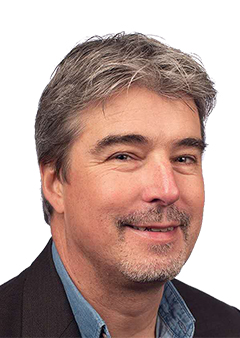
Mr. Erik Moller (M.Sc. in Reactor technology, Department of Mechanics, KTH, Stockholm Sweden). 1993-98 doctorial studies at the department for neutron and reactor physics, KTH. Research aimed at reducing the radioactivity content in spent nuclear fuel using thermal-epithermal neutron spectra. Affiliated with Los Alamos National Laboratory, USA for 15 months. Professional career started within the Swedish Nuclear operator Vattenfall, focusing on severe accident management – research, modelling, analysis and licensing issues. Employed by SKB International since 2006. Working as a project manager for international projects and within the Swedish national programme (SKB) as a nuclear fuel, radiation and accident management expert.
Abstract:Sweden took crucial decisions regarding nuclear fuel cycle back-end issues in the late 1970’ies, forming an independent waste management organisation (WMO), the Swedish Nuclear Fuel and Waste Management Company (SKB). For more than 40 years SKB have continually and iteratively improved the radioactive waste management programme in Sweden, including all radioactive waste forms – VLLW to HLW. The statues of the three different geological repositories will be discussed, including the supporting systems and facilities: Transportation system, Central Interim Storage Facility for Spent Nuclear Fuel (Clab) and the research laboratories. SKB’s underground hard rock laboratory (URL) at ?sp? plays an important role in the national waste management programme, not only for the method for final disposal of the spent nuclear fuel (KBS-3). ?sp? URL serves as key component in the success of the Swedish programme; as a platform for research, engineering development, and confidence building activity. Briefly the ongoing licensing process to construct a spent fuel repository in Forsmark and an encapsulation plant in Oskarshamn will be covered. SKB consider the safe and sound radioactive waste management and the development final repositories a global concern and will, through SKB International, support the development of WMO’s all over the world.

